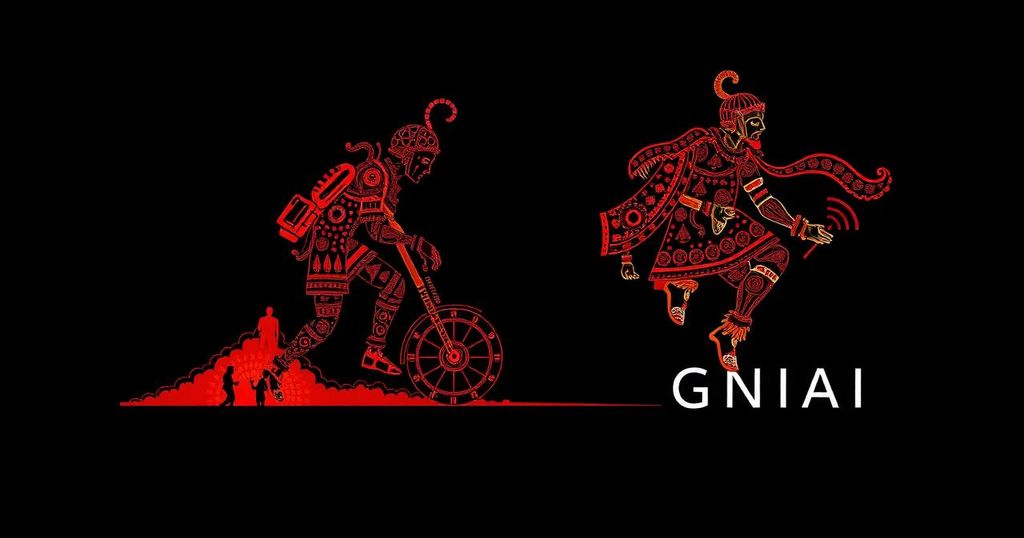Summary
The advancement of Artificial Intelligence (AI) has significantly transformed the technological landscape, particularly with the proliferation of Large Language Models (LLMs). However, the predominant LLMs developed in Western nations have historically offered limited support for Indic languages. This narrative is experiencing a considerable shift as several companies focus on the development of regional LLMs tailored for Indian languages. Among the key players is Bhashini, an initiative launched by the Government of India that aims to dismantle language barriers across the nation. This initiative supports 22 languages and has developed over 300 AI models, including a mobile application that has achieved over 500,000 downloads. Additionally, AI4Bharat, a research lab based at the Indian Institute of Technology Madras, is committed to enhancing Indian language technology. Their contributions include various influential projects such as IndicCorp, BPCC, and IndicBERT, which have garnered recognition at prestigious international conferences. Furthermore, Sarvam AI, a startup co-founded by Vivek Raghavan and Pratyush Kumar and backed by prominent investors such as Lightspeed and Khosla Ventures, is innovating in the Generative AI space with a focus on Indic languages. Recently, Sarvam AI made headlines with its introduction of Sarvam 2B, a generative AI model with 2 billion parameters, which has been open-sourced on Hugging Face. The company asserts that this model boasts enhanced efficiency for Indian languages relative to leading models such as Meta’s Llama 3.1 and GPT-4o. In a noteworthy development, Tech Mahindra has unveiled Project Indus, which aims to create India’s largest LLM from the ground up. Kunal Purohit, President of Next Gen Services at Tech Mahindra, emphasized that India is transitioning from being a technology consumer to a producer. With Project Indus, the organization has successfully developed an open-source foundational model that supports Hindi and over 37 dialects, facilitating interactive communication tailored to regional language nuances. Another significant player in this domain is Gnani.ai, a pioneering company focused on Small Language Models (SLMs) for industry-specific applications. Gnani.ai has a rich history of investment in AI technology, and the company has garnered support from investors such as Samsung Ventures. Ganesh Gopalan, Co-Founder and CEO of Gnani.ai, believes that AI has the potential to address fundamental issues in India, ranging from primary education to maternal healthcare, asserting that the application of AI is still in its infancy in the region. A notable collaborative initiative, Project Vaani, has been launched by the Indian Institute of Science (IISc) Bangalore, ARTPARK, and Google. This extensive project provides developers with access to a vast repository of over 14,000 hours of speech data across 59 languages, collected from various districts in India. Google is further expanding its commitment to Indic languages through its new project, Morni, which targets the development of AI models for approximately 125 Indic languages. Despite these advancements, the development and training of AI models in India face challenges, primarily concerning the reliance on high-performance hardware such as NVIDIA GPUs. In response, the Government of Telangana has partnered with Yotta Data Services to establish India’s largest AI supercomputer, which will be equipped with 25,000 high-performance GPUs. This infrastructure, featuring advanced connectivity and scalability, aims to provide essential computational resources for startups, educational institutions, and research laboratories. In conclusion, while the need for significant resources for Indic language model development remains, the trajectory of AI application in India is poised for exponential growth. As local initiatives advance and innovative technologies are embraced, India is on the verge of becoming a prominent market for AI adoption, particularly with the surge of voice bots and AI applications in various sectors, including fintech. It is evident that the collective efforts of organizations such as Bhashini, AI4Bharat, Sarvam AI, Tech Mahindra, and Gnani.ai represent the dawn of a new era in Indian technology, progressing toward the seamless integration of AI into the daily lives of its citizens.
Original Source: tech.hindustantimes.com

Leave a Reply